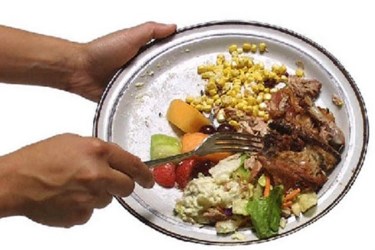Toolkit Will Help Producers Create Less Food Waste

By Sam Lewis

Food manufacturers, retailers, and restaurants have collaborated, offering solutions and advice of how to reduce food waste across all segments of the food industry
In an effort to reduce the amount of food waste sent to landfills, a group called the Food Waste Reduction Alliance (FWRA) has released a toolkit to aid in finding best practices and emerging solutions for the growing problem. The group is led by the Food Marketing Institute (FMI), the Grocery Manufacturers Association (GMA), and the National Restaurant Association (NRA).
More than 30 FWRA members contributed the model of best practices and emerging solutions within the toolkit. The contributors have focused on reducing food waste within food manufacturing and processing operations by:
- Methods to defeat problems in food donation, such as issues in the supply chain
- Recycling food waste and energy creating opportunities with new technologies
- Calculating plans to minimize and avoid creating food waste
A “Getting Started” portion of the toolkit gives food companies that are weighing food waste reduction strategies some tips to launch the operation. Among the strategies in “Getting Started” are, waste characterization assessment, establishing standard operating procedures, and developing collaborative relationships with partners from the anti-hunger community, waste management providers and other stakeholders.
Many real-life examples and case studies of the tactics discoursed can be found in the toolkit’s Best Practices and Emerging Solutions sections. “One of the most valuable features of the toolkit is that it includes examples and insights from companies that illustrate the strategies outlined,” says Wegman’s sustainability coordinator, and co-author of the tool kit, Jason Wadsworth. “What’s more, the alliance recognizes that there are operational differences between food manufacturers, retailers, and foodservice companies, so there are case studies that speak to the unique concerns and challenges of each sector.”
Another author of the tool kit, ConAgra Foods’ VP of sustainable development Gail Tavill says, “The Food Waste Reduction Alliance has been working to tackle food waste challenges within the food sector since 2011, but we know that there are companies out there that are just starting to look at the issue.” Tavill continues, “Our goal for the toolkit is to elevate the issue of food waste within the sector and enable more companies to take action by sharing key learnings and model practices gleaned from organizations who are at the leading edge of this issue.”
Nearly 80 billion pounds of food are wasted and sent to landfills annually. Most of this waste occurs within the residential sector, but manufacturing and other sectors of the food industry add to the issue. The FWRA’s toolkit offers plans and guidelines for food industry professionals to employ, with the ultimate goal to reduce food waste and keep it out of landfills. “The sad truth is that while food is going to waste, 37 million Americans struggle to put enough food on the table to feed their families,” says another author of the toolkit, Karen Hanner, ,director of manufacturing product sourcing at Feeding America. “The safe, edible food that is diverted from the waste stream to food banks through model practices showcased in the toolkit make a positive social impact on communities across the country by providing sustenance to those in need.”
